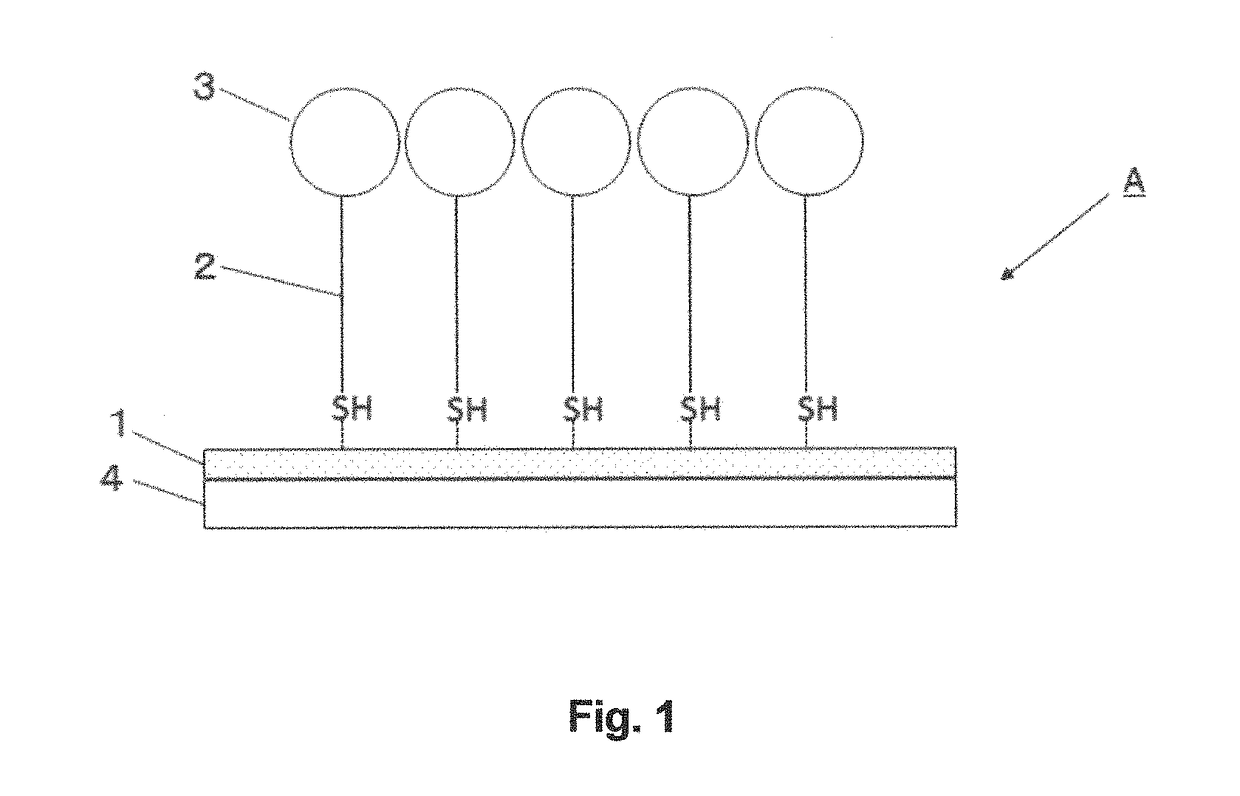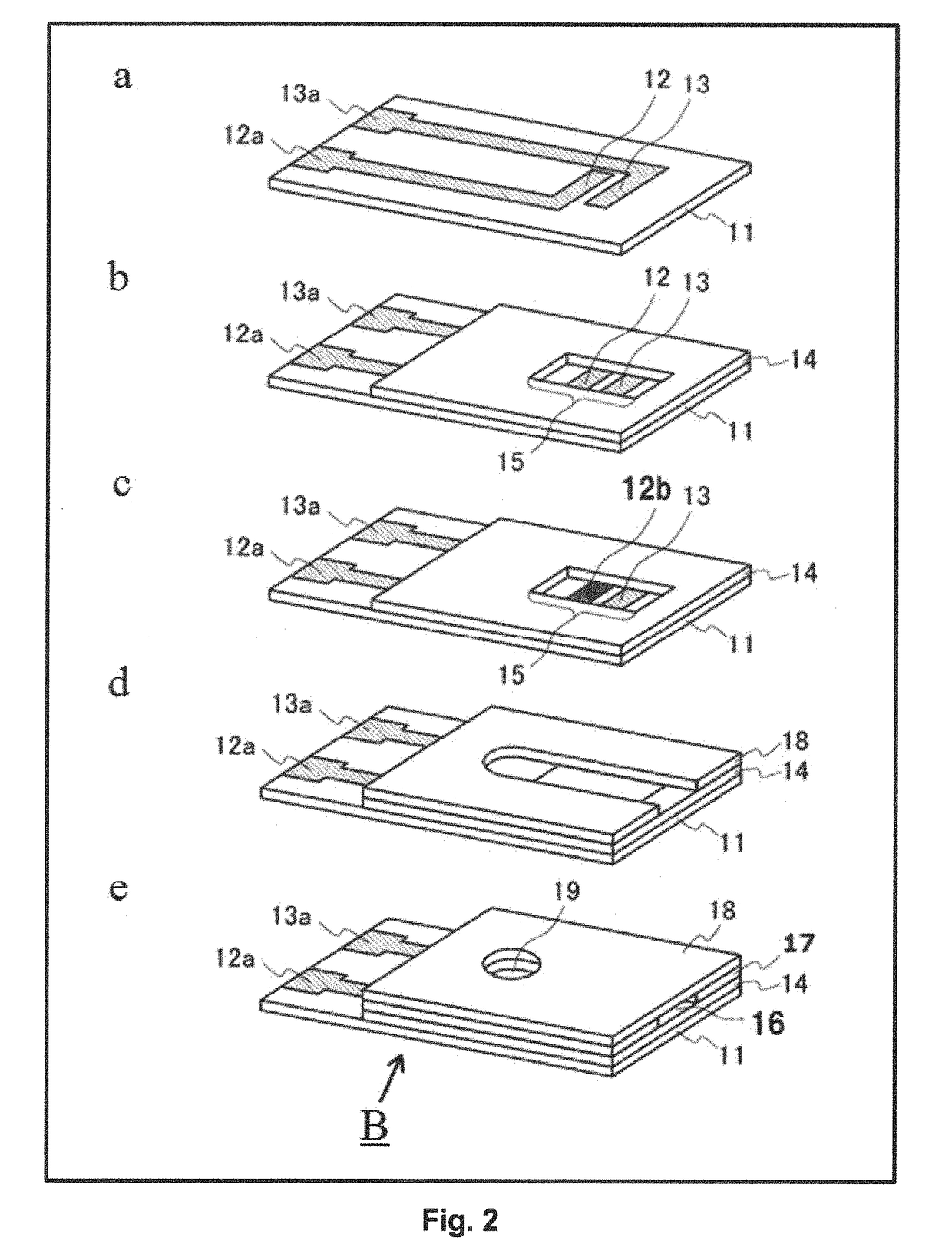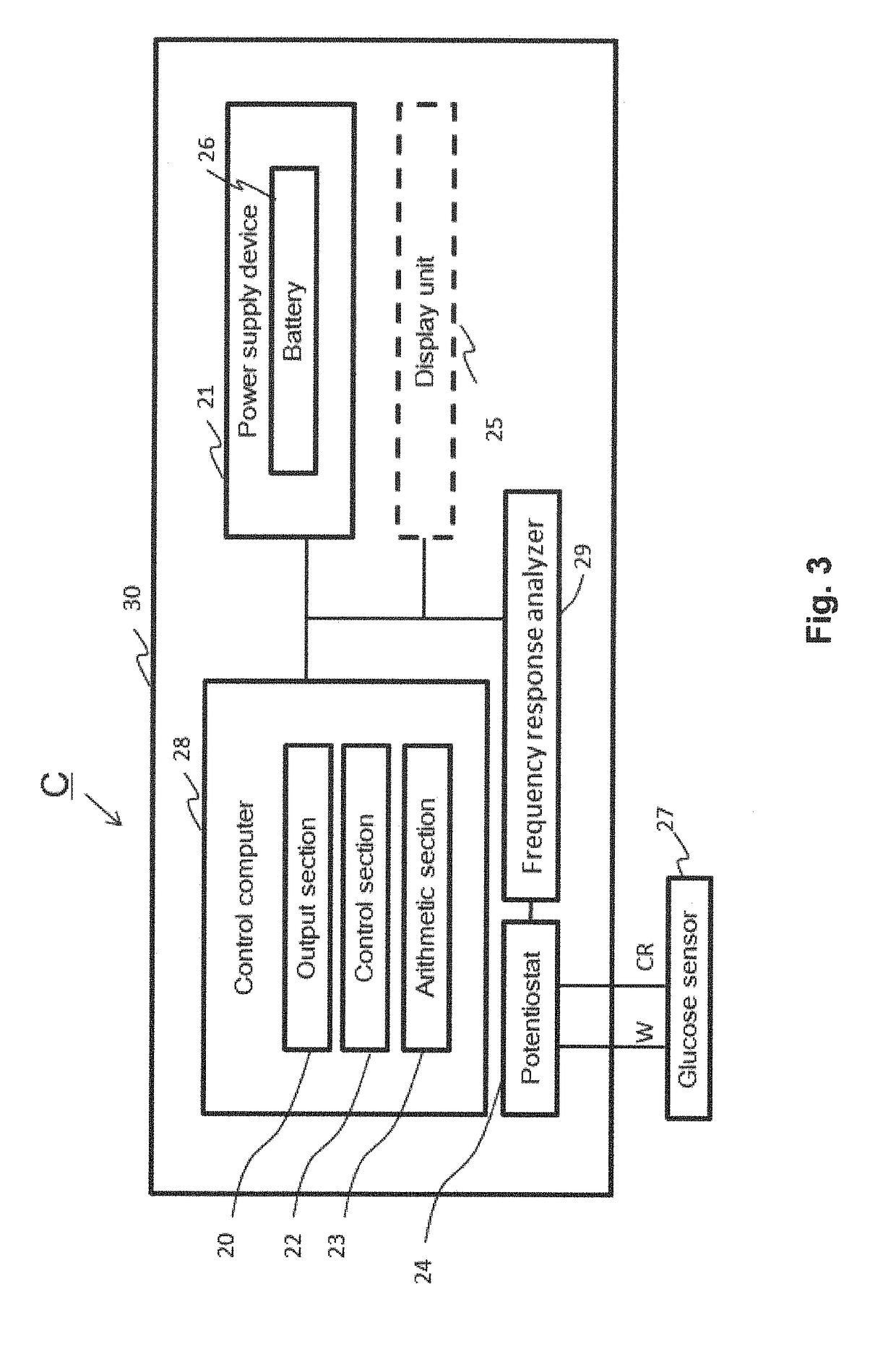Novel Biosensing Technology Based on Enzymatic Electrochemical Impedance Measurement
- Summary
- Abstract
- Description
- Claims
- Application Information
AI Technical Summary
Benefits of technology
Problems solved by technology
Method used
Image
Examples
example 1
Preparation of Enzyme Electrode
[0119]An enzyme electrode was prepared by immobilizing GDH containing a cytochrome c subunit on a gold surface via a monolayer-forming molecule. As the monolayer-forming molecule, DSH, which is shown below, was used.
[0120]More specifically, a gold wire (diameter, 0.5 mm; length, 6 to 7 cm) was immersed in Piranha solution at room temperature overnight, and then washed with acetone. The gold wire was then immersed in a solution of DSH in acetone (concentration, 20 μM), and incubated at 25° C. for 24 hours to allow binding of thiol groups of DSH to the gold surface. Subsequently, the gold wire was washed with acetone, immersed in PPB (pH 7.0) containing an enzyme (FADGDH derived from Burkholderia cepacia (γα(QYY)β; as disclosed in JP 2012-090563 A) (concentration 0.03 mg / ml)), and incubated at 4° C. overnight to allow the enzyme to be bound via a functional group of DSH to obtain an enzyme electrode.
Impedance Measurement
[0121]The impedance measurement wa...
example 2
Preparation of Enzyme Electrode
[0126]GDH to which phenazine ethosulfate (PES) is bound was immobilized on a carbon surface through a monolayer-forming molecule, to prepare an enzyme electrode. As the monolayer-forming molecule, NTA-SAM Formation Reagent (Dojindo Laboratories) was used.
[0127]More specifically, a gold wire (diameter, 0.5 mm; length, 6 to 7 cm) was immersed in Piranha solution at room temperature overnight, and then washed with acetone. The gold wire was then immersed in a solution of NTA-SAM in ethanol (concentration, 0.2 mM), and incubated at 25° C. for 24 hours to allow binding of NTA-SAM to the gold surface. Subsequently, the gold wire was immersed in 40 mM aqueous NiSO4 solution at room temperature for 1 hour to allow chelation of Ni ions by NTA. After washing, 2 μL of a His-tagged mold-derived glucose dehydrogenase (BfuGDH) (concentration, 2.4 mg / ml) was added dropwise to the gold electrode modified with NTA-SAM, and the gold electrode was then dried at 25° C. fo...
PUM
 Login to View More
Login to View More Abstract
Description
Claims
Application Information
 Login to View More
Login to View More - R&D
- Intellectual Property
- Life Sciences
- Materials
- Tech Scout
- Unparalleled Data Quality
- Higher Quality Content
- 60% Fewer Hallucinations
Browse by: Latest US Patents, China's latest patents, Technical Efficacy Thesaurus, Application Domain, Technology Topic, Popular Technical Reports.
© 2025 PatSnap. All rights reserved.Legal|Privacy policy|Modern Slavery Act Transparency Statement|Sitemap|About US| Contact US: help@patsnap.com



